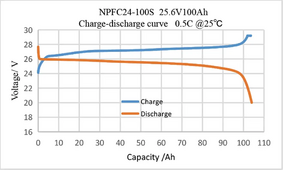Hi everyone!
I just bought two of these TimeUSB 140Ah LiFePO4 batteries to replace my two 10 year old 100Ah LiFePO4 with no BMS (no protections).
Has anyone on here got the same battery? They use pouch cells and are about the size of a regular 100Ah with prismatic cells. I did my best to test the capacity with a (cheap) shunt and battery monitor I've had for years. My first test came out at ~172Ah for the first battery and ~180Ah for the second. I went and bought a hall sensor DC clamp meter and "calibrated" my little battery monitor at 50A and ran the test again at about 50A discharge rate, with the batteries both hooked up in parallel this time, and got about 325Ah or ~162Ah each. Is it possible that they are that much over rated capacity? I will be getting a Victron battery monitor soon and run a hopefully more accurate test.
One concern I have is that the new batteries don't seem to have any "absorption" time and actually turn off when they are fully charged. As soon as they hit 14.5-14.6V they stop accepting charge. Then something weird happens: the batteries will provide some voltage but not what you would expect. If you put on a small load, the voltage drops pretty quickly from 13.6V to something like 13.1V and eventually the battery will come back online and go back up to 13.7V and start discharging normally. I don't have much experience with batteries that have a BMS. Is this normal? In practice this isn't the best behavior because when the batteries are in their "off" state after fully charging, the solar charge controller is powering everything directly and my fridge makes the voltage jump all over the place from 13.8V to 15V as it tries to maintain a 14.4V absorption voltage. Should I turn off absorption altogether? Even with absorption off there will be a gap in time from when the batteries turn off from being fully charged until they start supplying their 13.6V under float conditions. Thoughts?
I just bought two of these TimeUSB 140Ah LiFePO4 batteries to replace my two 10 year old 100Ah LiFePO4 with no BMS (no protections).
Has anyone on here got the same battery? They use pouch cells and are about the size of a regular 100Ah with prismatic cells. I did my best to test the capacity with a (cheap) shunt and battery monitor I've had for years. My first test came out at ~172Ah for the first battery and ~180Ah for the second. I went and bought a hall sensor DC clamp meter and "calibrated" my little battery monitor at 50A and ran the test again at about 50A discharge rate, with the batteries both hooked up in parallel this time, and got about 325Ah or ~162Ah each. Is it possible that they are that much over rated capacity? I will be getting a Victron battery monitor soon and run a hopefully more accurate test.
One concern I have is that the new batteries don't seem to have any "absorption" time and actually turn off when they are fully charged. As soon as they hit 14.5-14.6V they stop accepting charge. Then something weird happens: the batteries will provide some voltage but not what you would expect. If you put on a small load, the voltage drops pretty quickly from 13.6V to something like 13.1V and eventually the battery will come back online and go back up to 13.7V and start discharging normally. I don't have much experience with batteries that have a BMS. Is this normal? In practice this isn't the best behavior because when the batteries are in their "off" state after fully charging, the solar charge controller is powering everything directly and my fridge makes the voltage jump all over the place from 13.8V to 15V as it tries to maintain a 14.4V absorption voltage. Should I turn off absorption altogether? Even with absorption off there will be a gap in time from when the batteries turn off from being fully charged until they start supplying their 13.6V under float conditions. Thoughts?
Last edited:




